Ampere Primus: A good balance of practicality and performance?
At a sticker price of Rs 1.10 lakh (ex-showroom), is the Ampere Primus a good bet to place in the electric scooter space? Here’s what we found out.
There has been a large influx of electric vehicles (EVs) in the Indian market in recent years, especially in the e-scooter segment, where the recently-launched Ampere Primus aims to get traction.
A subsidiary of Greaves Electric Mobility, Ampere is one of the prominent brands in the Indian e-scooter space with pre-existing models like Zeal EX and Magnus EX. The company intends to solidify its presence in the market with the new Primus, amid the plethora of offerings available.

Ampere Primus
River Indie electric scooter launched at Rs 1.25 lakh, is it an SUV of scooters?
It is also the first truly indigenous, made-in-India, and made-for-India model by Ampere. AutoStory got hold of the Primus recently and tested it at the company’s manufacturing facility at Ranipet, Tamil Nadu. Here’s what we learnt about the e-scooter:
Design and quality
Primus resonates with most scooters in the Indian market when it comes to its appearance with its contemporary design. It avoids being too flashy, thanks to a minimalistic approach, giving it a clean look. Up front, it gets twin LED elements with integrated turn indicators on the apron that make for a striking face.
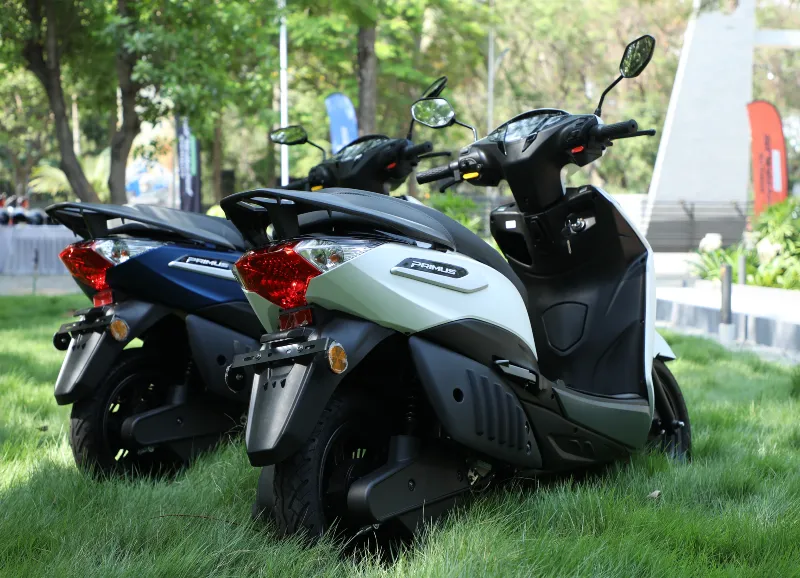
Primus gets a contemporary design of a scooter
The roomy floorboard and a long single-piece seat have been designed to cater to the needs of the daily commuter. The tail section looks simple too with a chunky grab rail and an integrated cluster for taillamps and turn indicators. We feel Ampere has done a good job keeping the mass market buyers in mind.
The quality of materials used on the scooter is decent, if not premium. Most of the panels are built from plastic but to its credit, the Primus feels solidly built. The quality of plastic and rubber on the switchgear is acceptable for the space it intends to occupy, and we didn’t find any particular reason to complain.
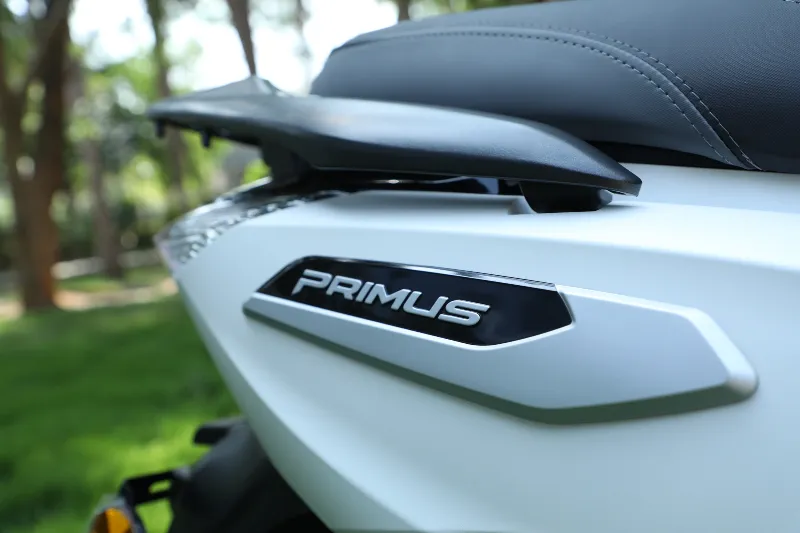
Quality of materials and paint was found to be decent
Ampere has also shown effort in offering above-average paint quality. Primus gets four colour options, including Royal Orange, Havelock Blue, Buck Black and Himalayan White. Our test model was wrapped in the blue colour scheme, but my personal favourite is the white shade that gels perfectly with the aesthetics of the scooter.
Features and ergonomics
For a commuter scooter, the Primus has been decently kitted with features like an LED headlight, a USB charging port, a side stand sensor, and an LCD instrument console that reads information like speed, battery indicator, distance to empty, etc. There’s also Bluetooth connectivity for navigation assist, although we were unable to test this feature on our test model.
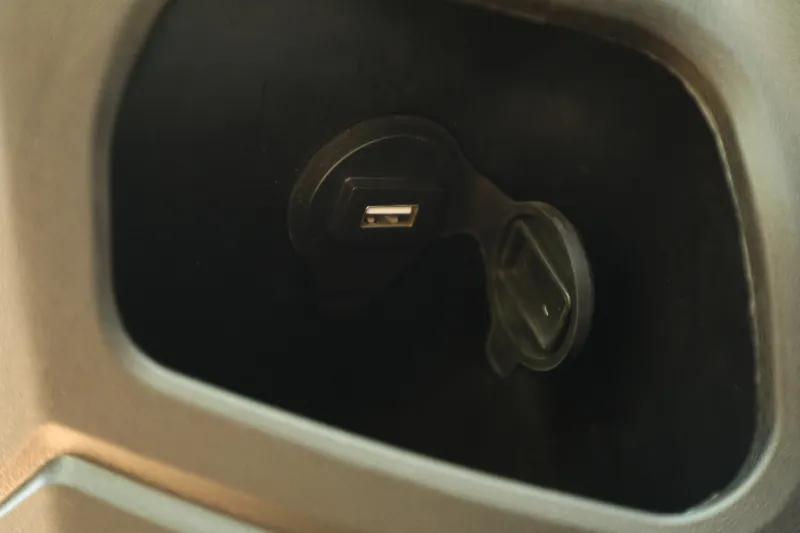
Front cubby hole with USB charging port
However, we used the reverse mode that assists in getting the scooter out of tight parking spaces. The underseat storage is spacious at 22 litres although it isn’t deep enough to accommodate a full-face helmet, at least in the conventional way. The boot is lit by an LED light which we felt was a nice touch. A cubby hole at the front complemented by a flat footboard ensures that Primus remains a practical offering as well.
Performance and range
Powering Ampere Primus is a mid-mounted PMS electric motor with a peak output of 4kW that sends power to the rear wheel via a belt drive. The claimed acceleration time of 0-40 kmph is 4.2 seconds, while the claimed top speed is 77 kmph, although we did manage to clock a speedo-indicated speed of over 80 kmph on more than a couple of occasions.
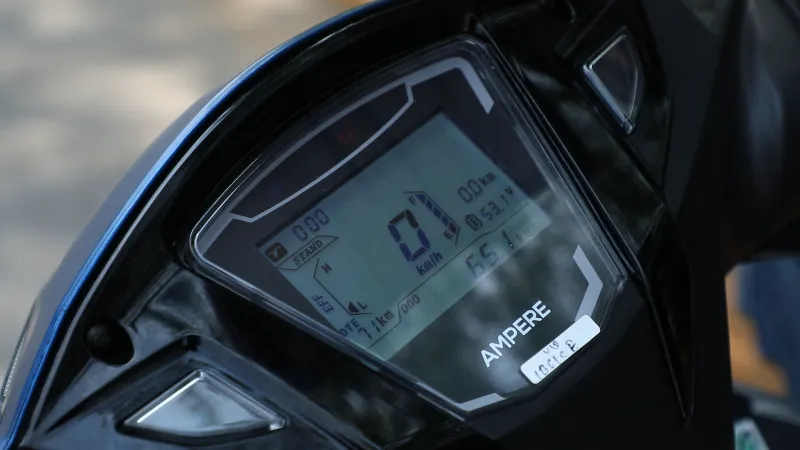
LCD instrument panel on Ampere
Performance isn’t rapid but doesn’t feel sluggish either. There are three ride modes to choose from—Eco, City and Power, although there isn’t a stark difference in performance among them. We spent most of our time with the scooter in the Power mode, while in the limited period in Eco and City modes, the scooter managed to clock a top speed of 45 kmph and 65 kmph, respectively.
Despite being powered by an electric motor, the acceleration remains linear throughout, mirroring an internal combustion engine (ICE) and masking the jerky effect of an EV quite well. Although peppy in nature, performance isn’t exciting as something like an Ola S1 or an Ather 450X. That said, expecting such a performance from Primus would be unfair since both the above-mentioned electric scooters feature more powerful motors.
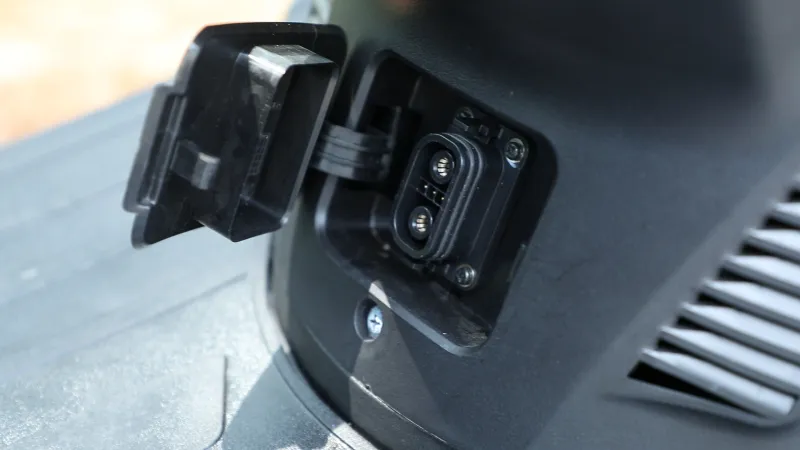
Ampere offers a standard wall box charger with Primus
The company claims a maximum ARAI-rated range of 107 km on a single charge in Eco mode, which is credited to the high energy density 3kW LFP (Lithium Iron Phosphate) battery. However, shortage of time meant we were unable to test this claim and only a thorough road test will provide us with proper answers.
Ampere is offering a standard wall box charger with the Primus that could juice up the battery to 100% in five hours. The company is also working on offering a fast charging option that could rejuvenate the battery in under 2.5 hours.
Ride and handling
In the limited time we spent with the Primus, the scooter handled really well although we must inform our readers that we rode mostly on smooth tarmac around the company’s facility in Ranipet. At a kerb weight of 130kg, it is heavier than most of its ICE counterparts but feels extremely nimble and flickable while riding.
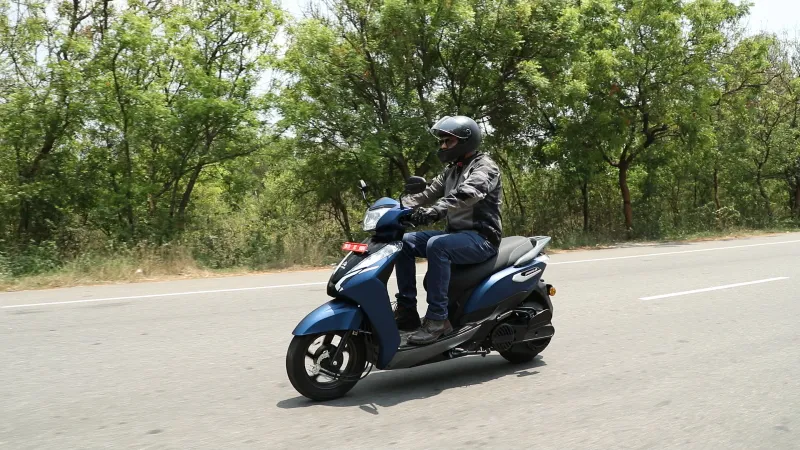
Primus feels stable around corners with a subtle ride quality
The chassis sits on hydraulic telescopic forks up front and dual shock absorbers at the rear, which are tuned slightly on the stiffer side. Although for the limited experience, we found the Primus to strike a nice balance between agility and comfort. It felt assured around corners and yet felt comfortable over small undulations. The 12-inch alloy wheels shod tubeless tyres provide a good grip on the tarmac.
Speaking of comfort, the seat is wide and long enough to accommodate the rider and the pillion in relative comfort. The ergonomics of the battery-powered scooter are fairly relaxed, however, the positioning of the battery cells underneath the floorboard meant the rider sits in a slight knees-up position.
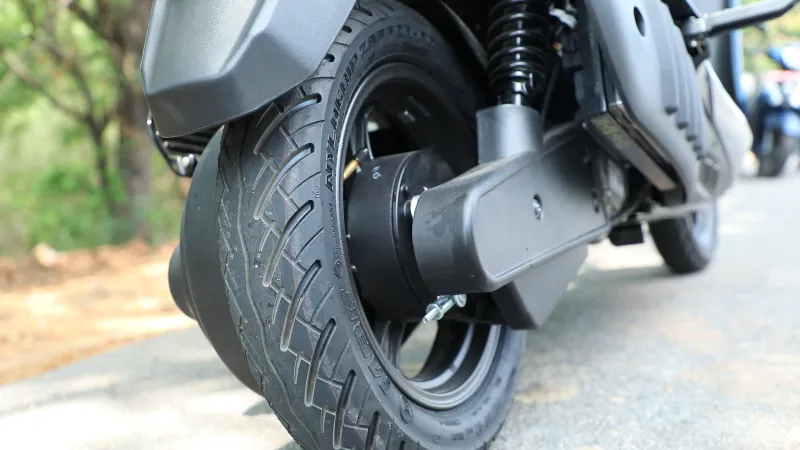
Primus powered by a 4kW mid-mounted motor that sends power to the rear wheel via a belt drive
The drum brake setup felt progressive although we would have liked a bit more bite at the levers. The combi braking setup (CBS) also does its job well but it is no match to the safety net offered by an anti-lock braking system (ABS).
Verdict
At Rs 1.10 lakh (ex-showroom India), Ampere Primus is not a cheap scooter by any means, however, it lacks the premium appeal that we associate with two-wheelers at this price point. That said, it is an affordable and very practical alternative to premium electric scooters like Ola S1 Pro, Ather 450X and Bajaj Chetak, and performs the duties it has been designed for with distinction.
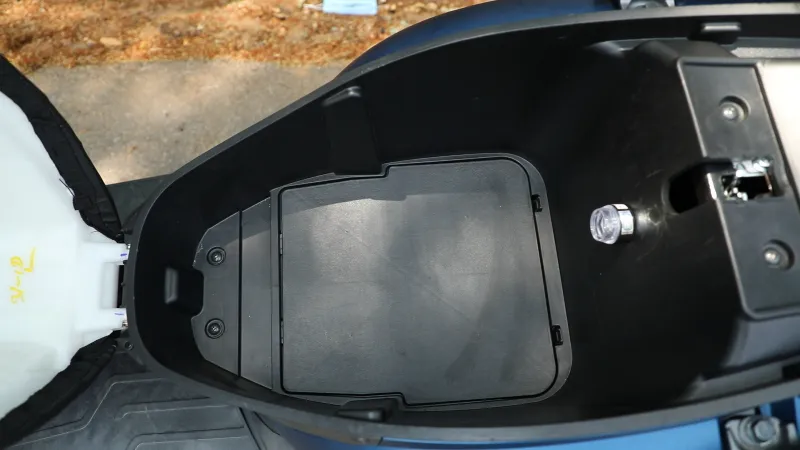
Primus gets a 22-litre underseat storage
For an everyday commuter scooter, the performance of Primus feels more than adequate and usable in the real world as it is backed by features that have been smartly integrated. Yes, there are a few minor niggles that Ampere can do away with, but the Primus presents itself as a worthy option in the battery-powered scooter segment thanks to the overall package that combines a sturdy build, decent performance and range, and usable equipment.
Edited by Kanishk Singh







